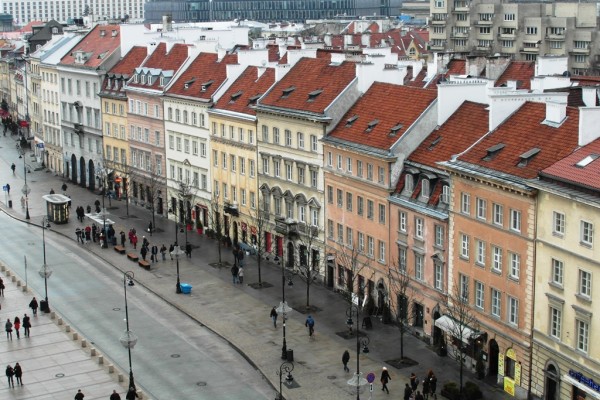
Warsaw wasn’t initially part of the plan.
And in case you were wondering, I do know Poland was never officially part of the Soviet Union. So if we want to get technical, it didn’t belong on my tour of the former Soviet republics.
But it may as well have been.
After “liberating” Poland from the Nazis at the end of World War II, the Soviets basically controlled the country for the next five decades.
I wasn’t quite sure what to expect from Warsaw – it isn’t one of those cities that people tend to rave about. In fact, most people suggested I minimize my time in Warsaw and head to Krakow instead.
I am glad I didn’t listen.
Visiting Warsaw was a somber experience.
Almost everywhere I went in the center of the city, I saw reminders of Warsaw’s tragic history. As a few different residents showed me around, I heard a common refrain:“that was destroyed in the war.”
Twenty-one markers show where walls of the Jewish Ghetto once stood – the Ghetto created by the Nazis in 1940 that imprisoned 380,000 Jews in an area covering 18 kilometers. People lived eight to a room and were allotted less than 200 calories per day. Over 100,000 starved to death in 1941 alone.
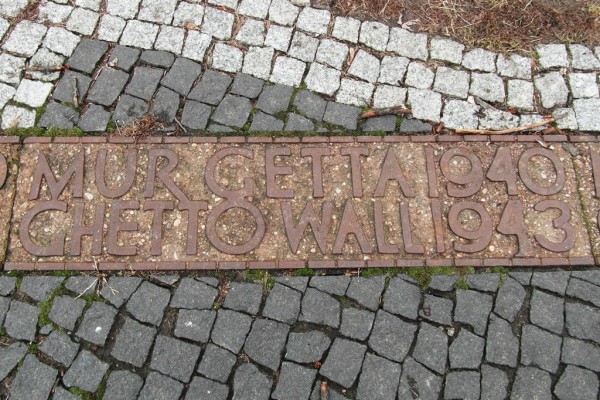
The Umschlagplatz memorial on Stawki street marks the location where the Nazis loaded over 300,000 Jews into cattle wagons to transport them to the gas chambers at Treblinka, 100 kilometers northwest of Warsaw.
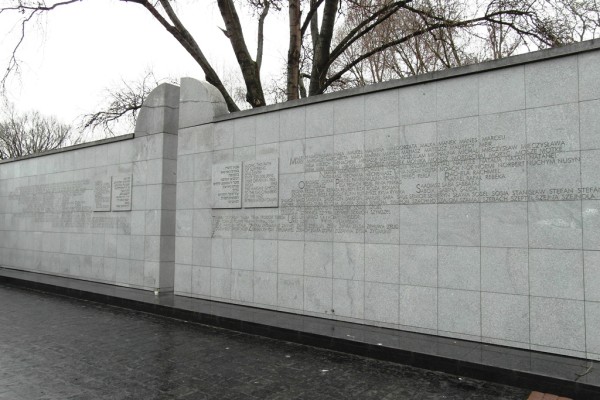

From Stawki street, additional markers lead to the Monument to the Ghetto Heroes, honoring those who fought in the Ghetto Uprising of 1943. By the time the uprising was quashed by the Nazis, the former Jewish quarter in Warsaw basically no longer existed.
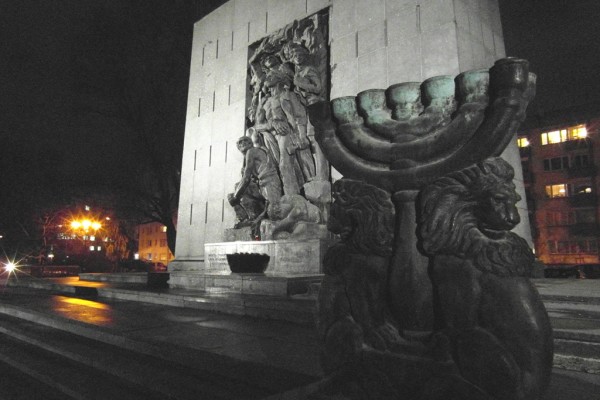
Outside of the Jewish Cemetery on Okopowa street, a memorial stands where two mass graves were discovered, filled with bones of men and women from a retirement home who had been brought to the spot only to be shot and killed. The cemetery itself holds over 250,000 graves, many sadly neglected.

The Monument to the Warsaw Uprising honors those who died in the uprising in August 1944, when the people of Warsaw fought valiantly to try to take their city back from the Nazis. Unfortunately, they were not successful and it ultimately led to the destruction of the vast majority of the city.
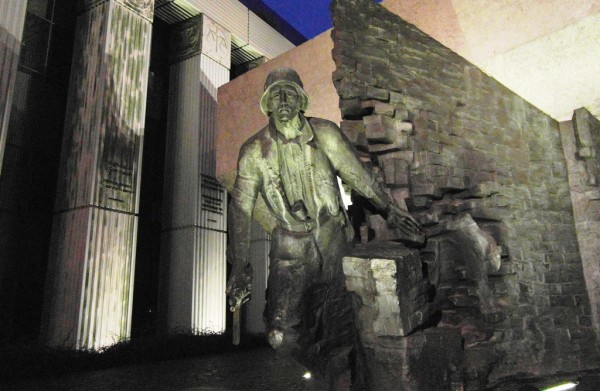
The Little Insurgent Monument commemorates the children who served as messengers and troops in the Uprising, the figure itself inspired by a 13-year-old who was killed in action.
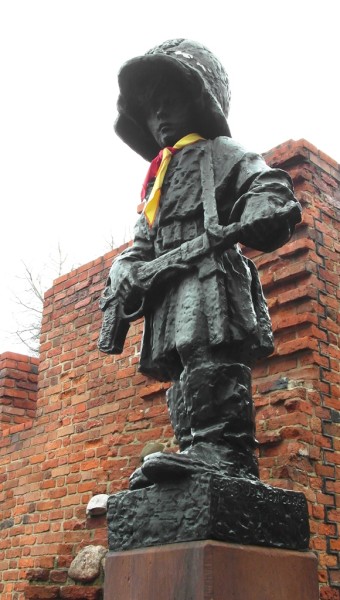
The Sapper Monument (a term that was new to me) remembers those who died after the war diffusing land mines and booby traps. An inscription reads:
“Free Warsaw will never forget those, who with their pain and blood, started the work on her reconstruction.”
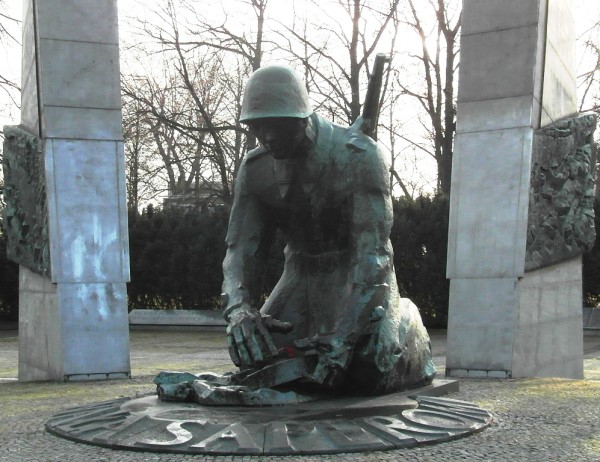
Although I learned about World War II and the Holocaust in both high school and college, it never really hit home. We studied the numbers and the facts and the politics, with little emphasis on the tragic human realities. When nothing even remotely similar has happened in your country’s history, it is hard to fully appreciate the enormity of what took place in Warsaw (and elsewhere) during World War II.
Visiting Warsaw made it all seem a little more real.
I spent hours at the Warsaw Uprising Museum, which chronicles life during the Nazi occupation, the daily events of the 1944 Uprising and the aftermath. I listened to interviews with survivors who fought for their city and their country. I watched film footage from the first month of the uprising. I saw photographs of the city after the Nazis tried to bomb it out of existence.
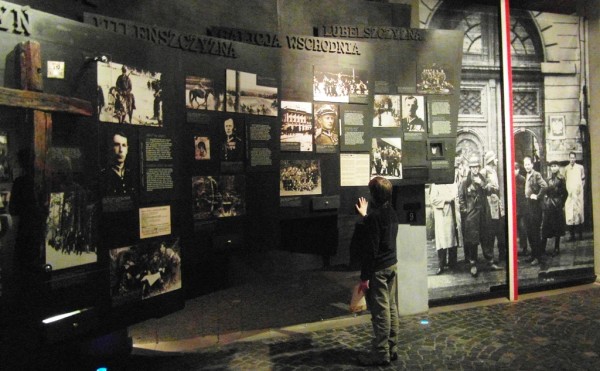
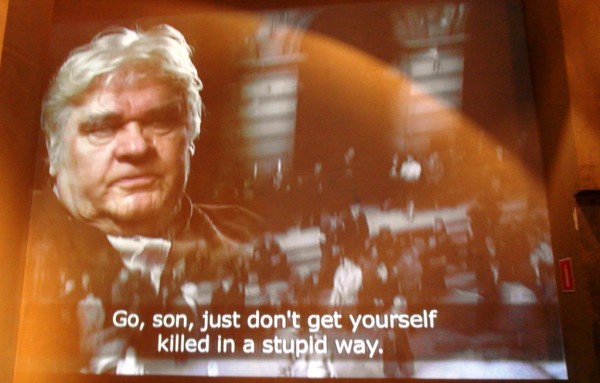
I visited the Pawiak Prison, where the Nazis executed nearly 40,000 prisoners and gathered another 60,000 to take to extermination camps. I heard from a former inmate, imprisoned when he was only 15. He told us that the worst part wasn’t the beatings (they could expect the beatings), but rather listening to the screams of fellow inmates as they were beaten.
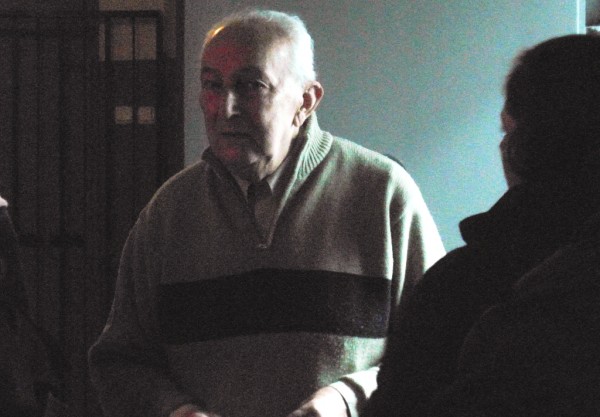
And while Warsaw’s lowest points were during World War II, the Soviet occupation brought Stalinist terror and decades of communist rule.
Across the street from the United States Embassy, a statue of former U.S. president Ronald Reagan portrays him standing at a podium in front of Berlin’s Brandenburg Gate in 1987 when he declared, “Mr. Gorbachev, tear down this wall.” As we stopped in front of the statue, a man near my parents’ age spoke to me emotionally about Reagan’s role in ending the Cold War and “freeing Poland from Russia.”
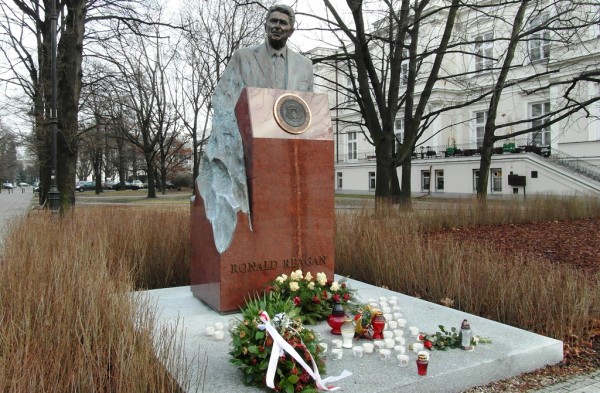
As somber as it was, visiting Warsaw was also inspiring.
It would have been easy for Warsaw to quit after World War II. With 85% of the city destroyed and over half of the population killed, Warsaw could have fallen off the map.
But it didn’t. It rose from the ashes and rebuilt.
The reconstruction of the city has been nothing short of amazing. Sure, it has its share of not-so-attractive steel and glass high rises and office buildings (which are unfortunately the first thing you see when arriving by bus or train). Residents also seem to bemoan the presence of the gargantuan Palace of Culture and Science, a “gift” from the Soviets in 1955.

Cobblestone lines the streets of Nowe Miasto (New Town) and Stare Miasto (Old Town). Buildings painted in yellow, green and orange look like they hail from the 19th century, not the mid-20th century. The Royal Castle, left with just one wall standing in 1944, dominates Pl. Zamkowy and, during my visit, served as an attractive backdrop for a large Christmas tree on the square.
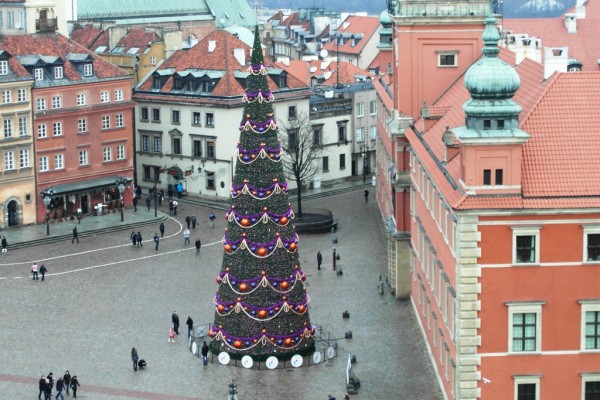
Heading out from the Old Town, Krakowskie Przedmiescie and Nowy Swiat have a quaint charm that I don’t often find in large cities. Perhaps it was just the festive Christmas lights that adorned the lamp posts and building fronts, but I found this stretch of Warsaw’s Old Royal Road more attractive than counterparts like the Champs Elysees, Nevsky Prospekt or Las Ramblas.

And of course, looming large across the Vistula River is Warsaw’s new football stadium. Together with Ukraine, Poland will host the Euro 2012 Football Championships this summer – something that would have been unthinkable just twenty years ago.
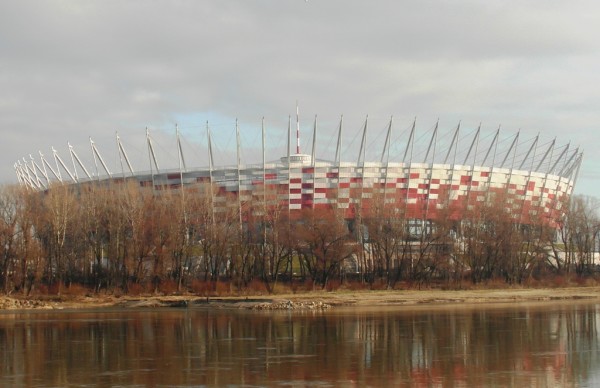
Indeed, Warsaw has come a long way.
